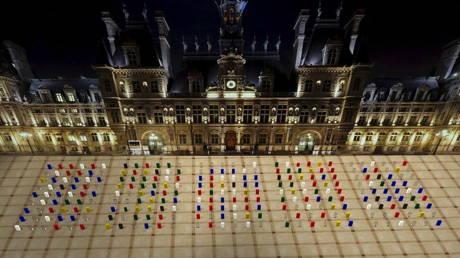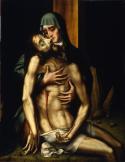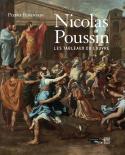Art Of The Day Weekly
#400 - from 1 October 2015 to 7 October 2015

Zhenchen Liu, Ice Monument in front of the Hôtel de Ville in Paris (Courtesy the artist).
IN THE AIR
Nuit Blanche, a crusade against global warming
PARIS – At the beginning of the night between October 3 to October 4 the temperature will be 15° C. Long live global warming! Not really though: the key theme of this 14th edition is indeed linked to the COP21 conference, which will open in Paris next month. What can we do to fight against a phenomenon that affects the whole planet? Will the annual $100 billion announced succeed to limit the rise of the thermometer? In any case, the artists have plenty of ideas to help us become aware of the seriousness of these facts. There are two itineraries - one North-West, the other North-East - that privilege the right bank: here we see a building melting like an iceberg (Leandro Erlich), a concert of -doomed?- insects bursts our ear drums (Erik Samakh), stars looked at directly in the eye (Félicie d’Estienne d’Orves and Félicie Rousse), a tightrope walker (Stéphane Ricordel) on a cloud, the only migrant who does not have to show his papers. While in front of the Hôtel de Ville, small colored ice cubes by Chinese artist Zhenchen Liu will melt throughout the night. Like a stick of dynamite.
• 14e Nuit blanche (Sleepless Night), from Saturday 3 to Sunday 4 October 2015. A great number of Nuits blanches will take place elsewhere in the world, in particular in Casablanca and Zagreb, which celebrate their first edition.
EXHIBITIONS

The Last Futurist Exhibition of Painting 0,10, Petrograd, winter 1915/16. The Malevich room with Black Square and other Suprematist paintings. Russian State Archives
Petrograd, 1915
BASEL – The title is as enigmatic as possible, even the sub-title was… Cabalistic figures, an attribute ("last") with a definite sound. This is a key moment for modern art: artists (seven women and seven men) from the Russian avant-garde got together and exhibiez what seemed unthinkable: a Black Square (Malevich), which furthermore is hanging from the "corner of God", reserved for icons, assemblages of pieces of wood badly scraped and other vulgar materials (Tatlin), streaks, disconnected letters, incomprehensible perspectives. The event in Petrograd in 1915 is a shock. One hundred years later, a part of those works (a good third of the 150 original paintings has disappeared) are again brought together.
• Looking for 0,10, the last Futurist painting exhibition at the Fondation Beyeler, from 4 October 2015 to 10 January 2016.

Luis de Morales, Pietà, oil on panel, 126 x 98 cm, 1560. Madrid, Museo de la Real Academia de Bellas Artes de San Fernando.
Morales, the Divine
MADRID – A native of Extremadura, like Zurbarán after him, Morales (1510-1585) was a very prolific painter but was almost monomaniac: he only painted holy images, and this gave him his nickname. Crucifixions, Holy Families, Flights into Egypt were abundant in his work, an this work was precise and almost metallic, like that of the Flemish who inspired him. Works on loan from other museums and cathedrals have come to reinforce the 19 works at the Prado, loans from cities in Spain, from New York, Minneapolis or Dresden show us a holy painting of which we had largely lost all understanding.
• El Divino Morales at the Prado museum, from 1 October 2015 to 10 January 2016.
Come rain or shine
PARIS - Other clouds (in peanut peel), other nebula, climate mappings, lightning (in neon lights), floods… The speech on the devastation of the environment becomes increasingly present as we near the date of the COP21. But artists did not wait for this meeting to work on the climate and on the forces of Nature. From Marina Abramovic to Yoko Ono, including a younger generation (Berrada, Grasso), the exhibit draws up an assessment.
Climats artificiels at the Fondation EDF, from 4 October to 28 February 2016.
ARTIST OF THE WEEK

Julien Prévieux, Patterns of Life, 2015, video HD/2K, 15’14’’ - Photos from a shooting © Julien Prévieux. Courtesy galerie Jousse Entreprise, Paris.
Julien Prévieux, a poet of statistics
What happens if you spend a few days with the special anti-crime police squadron, the BAC and visualize with them the route of pickpockets? This gives an interpretation with an airbrush: an abstract painting but held up by real data. The movements of a young father, with his accelerations and his moments of slowing down? The result is seven multi-faceted blocks, one for each day of the week. To visualize for thirty seconds the look of a spectator on a famous work of art, a Giacometti or Duchamp's Urinoir? This gives a cabalistic grid, as if traced on a magic slate. Julien Prévieux (born in 1974, prix Marcel Duchamp 2014), known for his letters of non-motivation sent to potential employers, continues to explore the movement of modern man and to re-transcribe it in colors, lines, and even ballets. Like poetic charades for a world that is in too much of a hurry…
• Julien Prévieux, des corps schématiques, at the Centre Pompidou (space 315), from 23 September 2015 to 1 February 2016.
BOOKS
Poussin, my love
Nicolas Poussin, the paragon of French classicism, has an interesting list of lovers. Among all those who have dedicatd a part of their lives to study him and his work, we see big names like Anthony Blunt, the famous art historien turned spy - or the contrary -, Denis Mahon, Jacques Thuillier or Pierre Rosenberg, the former director of the Louvre, whom we can thank for the large exhibition in 1994. Today he publishes a sort of testament on this subject: his exhaustive study of the Poussin in the large Parisian museum. This is no easy task since there are forty paintings (of which thirty two came from Louis XIV), and this represents almost half of the corpus … The Mars and Venus recently attributed to him is in first place and we finish with another romantic scene, Apollo in love of Daphne. The notes on each work are impressive by the level of knowledge they demonstrate (indicating copies, public sales, mentions in private collections, etc.). But the reader is also so impressed by the work done on the origin of the paintings. These descriptions can be read like a police investigation, like a detective novel that links the 17th century to our time.
• Nicolas Poussin, les tableaux du Louvre, by Pierre Rosenberg, Louvre éditions/Somogy, 2015, 400 p., €39.
OPENINGS OF THE WEEK

7th BIENNALE DES VERRIERS
2 October 2015 - CARMAUX - Musée/centre d'art du verre
The latest trends in contemporary glass-making


